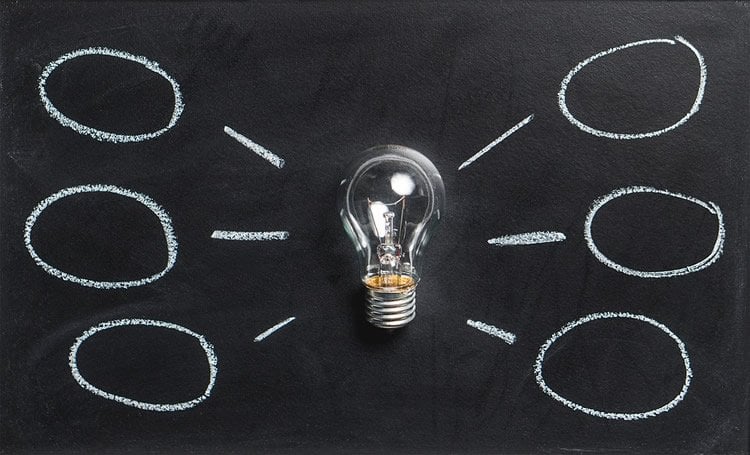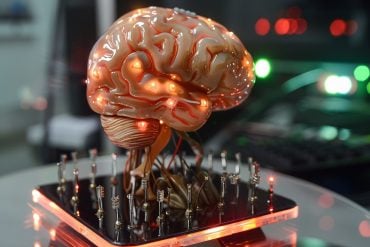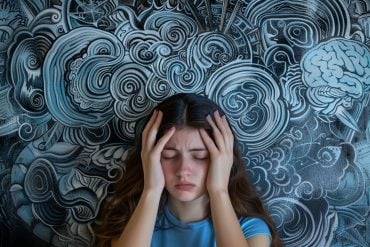Summary: A new study reports personal goal conflict can increase feelings of depression and anxiety.
Source: University of Exeter.
Being torn about which personal goals to pursue is associated with symptoms of psychological distress, new research shows.
A survey of more than 200 young adults by the University of Exeter and Edith Cowan University (ECU) investigated two forms of motivational conflict.
These were inter-goal conflict (when pursuing one goal makes it difficult to pursue another) and ambivalence (conflicting feelings about particular goals).
The results showed that each of these forms of goal conflict was independently associated with anxious and depressive symptoms, but did not predict worsening of symptoms over one month.
“People with poorer mental health are more likely to report that their personal goals hinder one another,” said Dr Nick Moberly, of the University of Exeter.
“Such conflict between goals may be more manageable if it is conscious.
“However, ambivalence may indicate a clash between a goal and a higher-order value that lies outside awareness.
“Attention to these deeper motivational conflicts may be an important step towards resolving them and relieving distress.”
Professor Joanne Dickson, of ECU, said: “We know that striving for goals that are important to us gives life meaning and purpose and promotes wellbeing.

“However, when these goals generate conflict they can contribute to psychological distress.”
Inter-goal conflict occurs either because the objectives are incompatible or because pursuit of both goals draws upon a limited resource, such as time or money.
For example, a person’s goal to spend more time with their family may conflict with their goal to get promoted at work.
Ambivalence is thought to reflect a deeper motivational conflict of which the person is unaware.
For example, a person may feel ambivalent about initiating an intimate relationship because this challenges a more abstract goal of independence.
The young adults in the study were aged 18-35, with an average age of 20.
Source: Alex Morrison – University of Exeter
Publisher: Organized by NeuroscienceNews.com.
Image Source: NeuroscienceNews.com image is in the public domain.
Original Research: Open access research for “Goal conflict, ambivalence and psychological distress: Concurrent and longitudinal relationships” by Nicholas J. Moberly and Joanne M. Dickson in Personality and Individual Differences. Published March 20 2018.
doi:10.1016/j.paid.2018.03.008
[cbtabs][cbtab title=”MLA”]University of Exeter “Goal Conflict Linked to Psychological Distress.” NeuroscienceNews. NeuroscienceNews, 25 May 2018.
<https://neurosciencenews.com/goal-conflict-psychology-9142/>.[/cbtab][cbtab title=”APA”]University of Exeter (2018, May 25). Goal Conflict Linked to Psychological Distress. NeuroscienceNews. Retrieved May 25, 2018 from https://neurosciencenews.com/goal-conflict-psychology-9142/[/cbtab][cbtab title=”Chicago”]University of Exeter “Goal Conflict Linked to Psychological Distress.” https://neurosciencenews.com/goal-conflict-psychology-9142/ (accessed May 25, 2018).[/cbtab][/cbtabs]
Abstract
Goal conflict, ambivalence and psychological distress: Concurrent and longitudinal relationships
Conflict between goals (inter-goal conflict) and conflicting feelings about attaining particular goals (ambivalence) are believed to be associated with depressive and anxious symptoms, but have rarely been investigated together. Kelly et al. (2011, Personality and Individual Differences, 50, 531-534) reported that inter-goal conflict interacted with ambivalence to predict concurrent depressive symptoms in undergraduates, with ambivalence being more strongly associated with depressive symptoms for persons reporting less inter-goal conflict. We sought to replicate and extend this finding in a larger sample, using separate measures of inter-goal conflict and facilitation, and a longitudinal follow-up. Undergraduates (N = 210) rated their goal strivings for ambivalence, inter-goal conflict and facilitation, and completed measures of depressive and anxious symptoms that were repeated after one month. Inter-goal conflict (but not facilitation) and ambivalence were both uniquely positively associated with depressive and anxious symptoms concurrently, but did not predict symptom change. Inter-goal conflict and ambivalence did not interact to predict concurrent symptoms, but inter-goal conflict was associated with greater reductions in anxious symptoms for people reporting low ambivalence. Findings suggest that different forms of motivational conflict across the goal hierarchy are associated with symptoms, but do not exacerbate symptoms over time.






